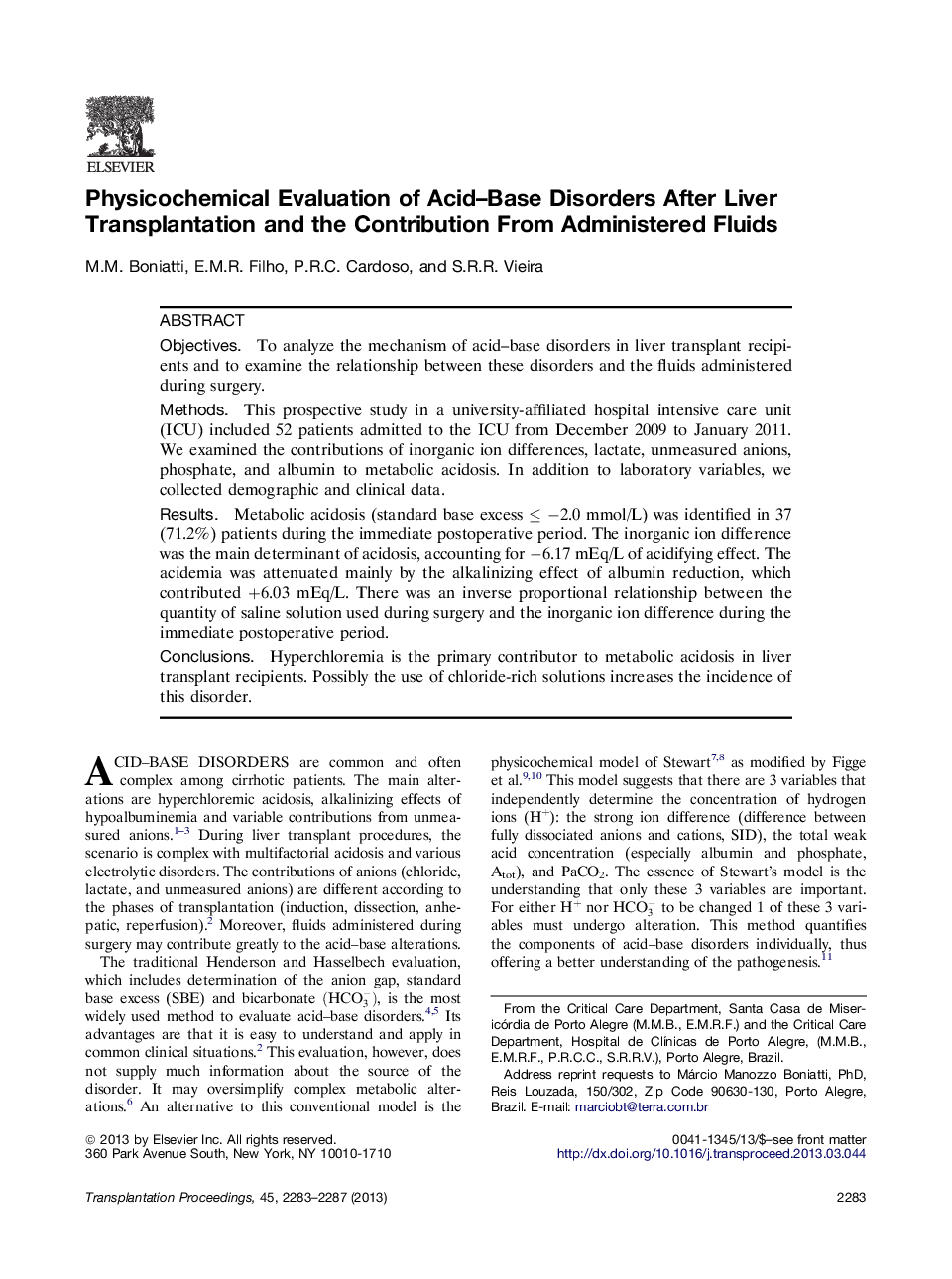| Article ID | Journal | Published Year | Pages | File Type |
|---|---|---|---|---|
| 4255668 | Transplantation Proceedings | 2013 | 5 Pages |
ObjectivesTo analyze the mechanism of acid–base disorders in liver transplant recipients and to examine the relationship between these disorders and the fluids administered during surgery.MethodsThis prospective study in a university-affiliated hospital intensive care unit (ICU) included 52 patients admitted to the ICU from December 2009 to January 2011. We examined the contributions of inorganic ion differences, lactate, unmeasured anions, phosphate, and albumin to metabolic acidosis. In addition to laboratory variables, we collected demographic and clinical data.ResultsMetabolic acidosis (standard base excess ≤ −2.0 mmol/L) was identified in 37 (71.2%) patients during the immediate postoperative period. The inorganic ion difference was the main determinant of acidosis, accounting for −6.17 mEq/L of acidifying effect. The acidemia was attenuated mainly by the alkalinizing effect of albumin reduction, which contributed +6.03 mEq/L. There was an inverse proportional relationship between the quantity of saline solution used during surgery and the inorganic ion difference during the immediate postoperative period.ConclusionsHyperchloremia is the primary contributor to metabolic acidosis in liver transplant recipients. Possibly the use of chloride-rich solutions increases the incidence of this disorder.
